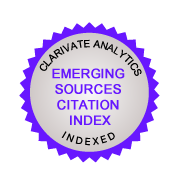CONSTRUCTING A SOCIAL ACCOUNTING MATRIX TO ADDRESS INCOME DISTRIBUTION ISSUES IN MALAYSIA
Keywords:
Social Accounting Matrix, Government expenditure, Income distribution, Multiplier analysis, MalaysiaAbstract
The Malaysian economy has undergone sound growth over the past three decades. During the 1990s, the government designed a vision to become a high-income developed nation by 2020. Strengthening aggregate demand within a developing economy such as Malaysia’s is critical for achieving this target. In quantifying the impact of such measures economists have employed the social accounting matrix as an analytical tool. The challenge associated with the construction of a social accounting matrix for Malaysia, especially when up-to-date databases are not readily available, is the main issue addressed by this paper. The constructed matrix can provide an updated country-wide data source for use in policy analysis and as a database for macroeconomic modelling purposes. The applied database investigates the key economic sectors contributing to Malaysia’s economic growth and income distribution between three household types. This paper presents the first attempt in this direction employing recently published input-output tables and complemented with updated data from different sources.Keywords: Social Accounting Matrix, Government expenditure, Income distribution, Multiplier analysis, Malaysia.
Additional Files
Published
27-07-2017
How to Cite
Yahoo, M., A. Rashid, Z., Kiaeeha, M. M., & Chatri, F. (2017). CONSTRUCTING A SOCIAL ACCOUNTING MATRIX TO ADDRESS INCOME DISTRIBUTION ISSUES IN MALAYSIA. International Journal of Management Studies, 24(1), 139–167. Retrieved from https://e-journal.uum.edu.my/index.php/ijms/article/view/10480
Issue
Section
Articles












